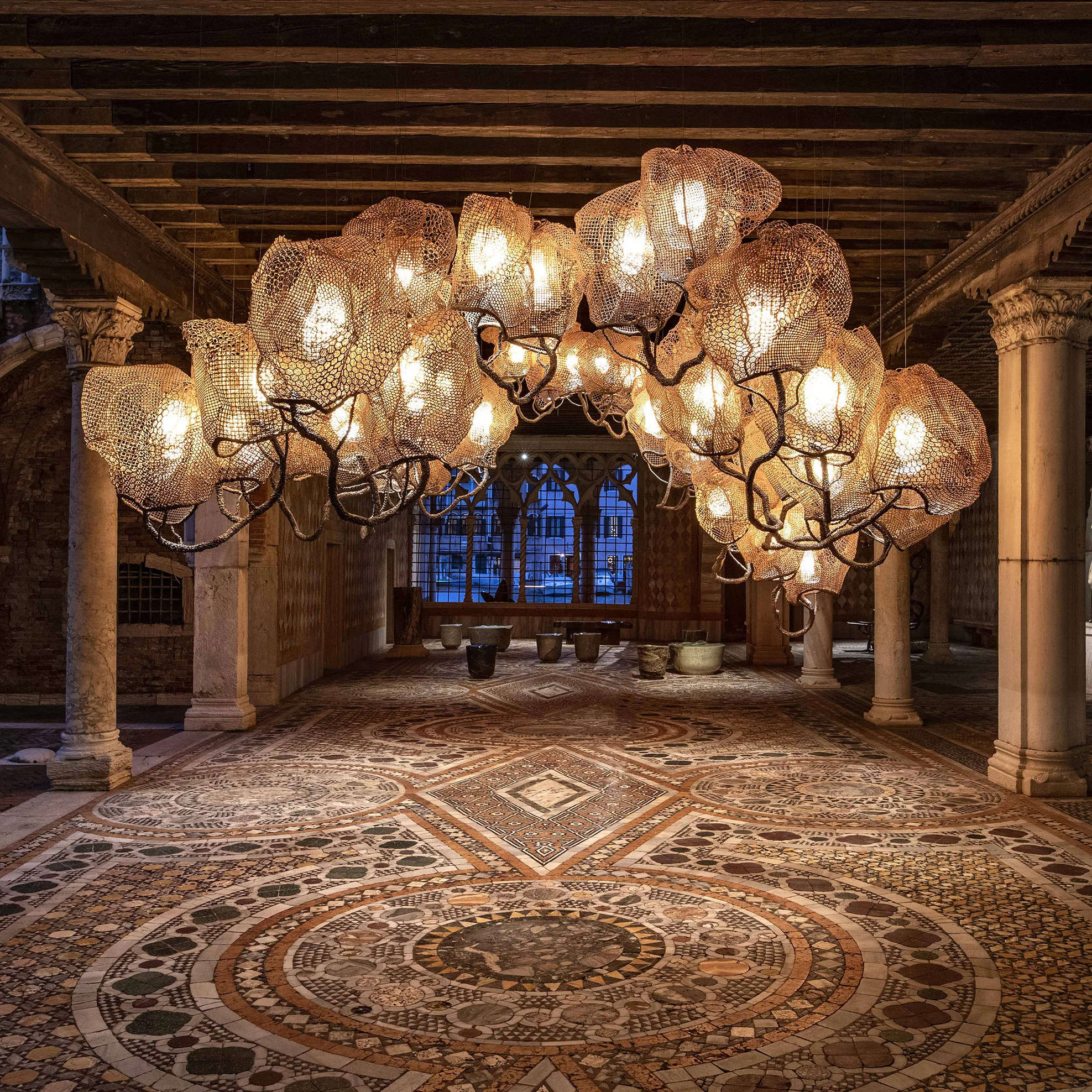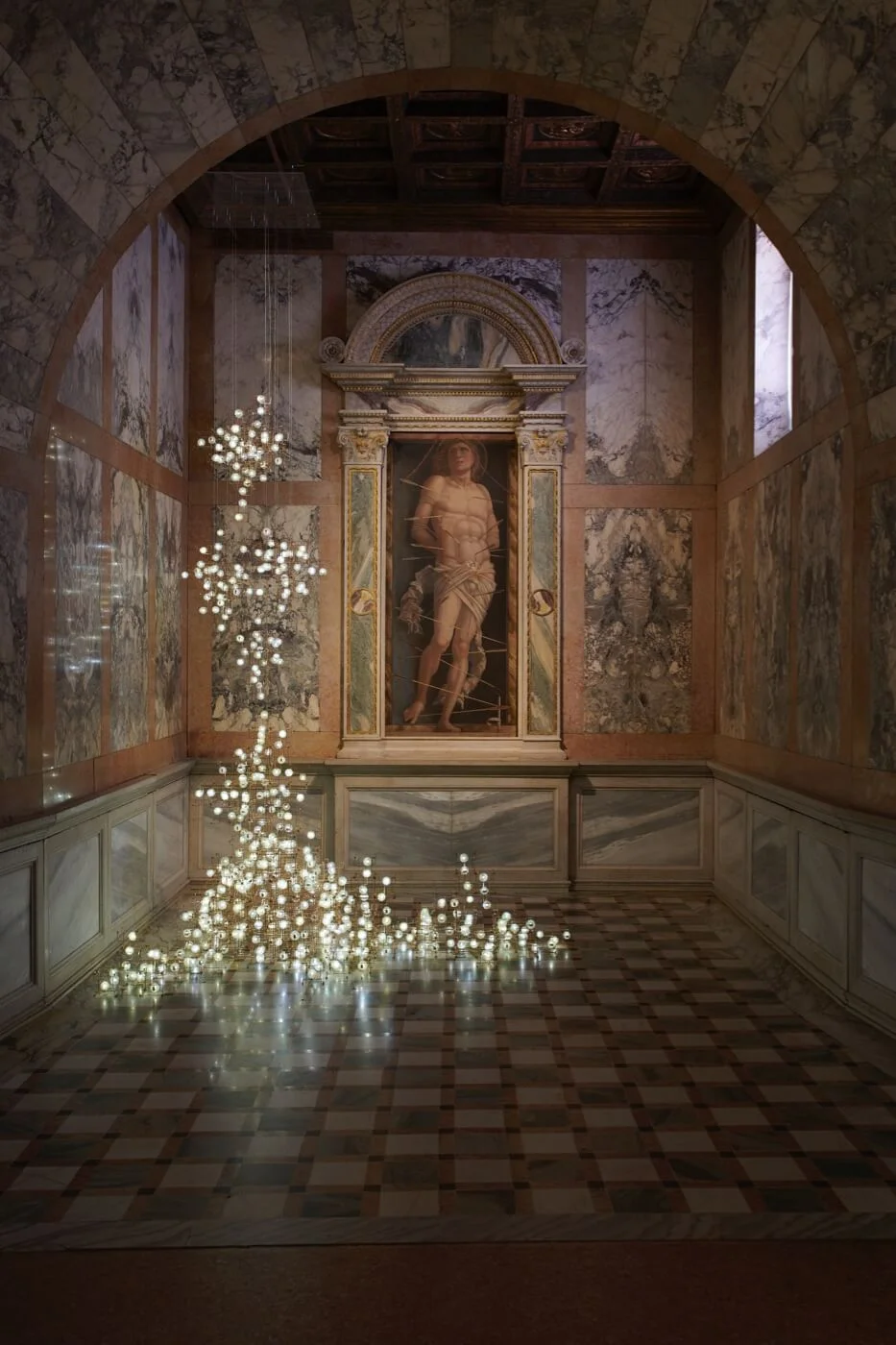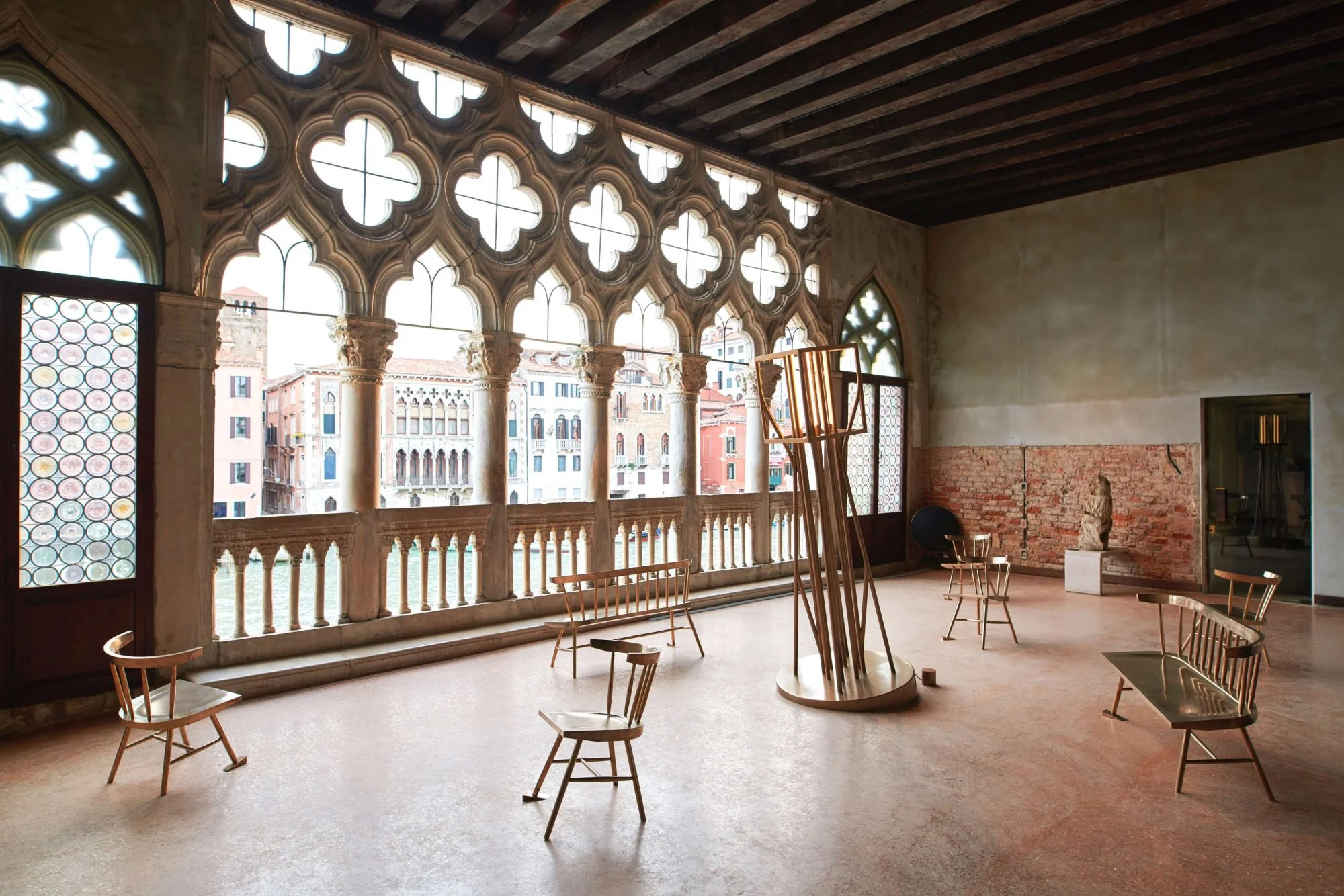The Same River, Twice
Commissioned by Carpenters Workshop Gallery for the exhibition Dysfunctional, at the Ca ‘d’Oro, Venice Biennale, 2019.
Nacho Carbonell.
“What an unhappy day I spent yesterday.”
The year was 1845, and John Ruskin, just twenty-six years of age, was writing to his father from Venice. He explained that he had gone to the Grand Canal, and stood directly across from the Ca’ d’Oro, or House of Gold. “I was vainly attempting to draw it while the workmen were hammering it down before my face,” Ruskin continued. “Yet the beauty of the fragments left behind is beyond all I had conceived.”
Six years later, Ruskin would commence publication of his multi-volume masterpiece The Stones of Venice, in which he implored his readers to look at the medieval city with new eyes, seeing it not as a ramshackle jumble devoid of classical order, but instead as a miracle of organic design. The Stones of Venice inspired the modern architectural preservation movement; equally lasting was Ruskin’s passionate defense of artisanal intelligence. The dreadful scene he’d witnessed at the Ca’ d’Oro, we may surmise, was one of the experiences that motivated his cause.
Verhoeven Twins.
He was right to be horrified. Though no professional architect had a hand in its creation, the Ca’ d’Oro is one of the world’s great architectural masterpieces. Commissioned in 1422 by the merchant Marin Contarini, the grand residence originally included a ground-floor warehouse, or fontego, for spices and cloth – the sources of Contarini's wealth. The building proceeded organically, without a master plan, constructed on the foundations of an existing palace. It was constructed principally by the mason Zane Bon and his son Bartolomeo, and apparently designed in collaboration with the patron and other craftsmen. (For their work the Bons were promised 140 ducats a year, and “an indefinite quantity of wine.”)[1]
Every surface of the Ca’ d’Oro was richly embellished, even the floors, which are polychrome mosaics. Its asymmetrical façade was originally embellished with gold leaf – the building’s name was no mere metaphor – but this was lost over the succeeding centuries. As Ruskin was anguished to see, it suffered many other losses too; in his own time a great central staircase, “the most interesting Gothic monument of the kind in Venice… was carried away, piece by piece, and sold for waste marble.”[2]
Fortunately, the Ca’ d’Oro would soon find a champion. In the words of one period observer, “Fate willed it that a notable man of his city, willing and able to lavish limitless generosity on the protection of her memories and her beauty, determined to buy the glorious house, to restore the parts that had been changed [with] rare artistic intelligence.”[3] This was Giorgio Franchetti, one of the great collectors of the age. In addition to restoring the structure, he also made it a treasure house, using it to display his collection of Old Masters – Titian, Van Dyck, Bernini, and Tintoretto among them. In 1916, Franchetti bequeathed the Ca’ d’Oro to the Italian government (a final magnanimous gesture) and it is today operated as a public gallery, showing off not only its own extraordinary treasures, but occasionally, other objects that can measure up to them. And this brings us to Dys-Functional: a gathering of fourteen of the world’s greatest designers in the spaces of the Ca’ d’Oro, organized by the gallery Carpenters Workshop.
In one sense, the exhibition is a study in contrasts: canonical works of the Renaissance juxtaposed with the unpredictable energies of the present. Yet there is more continuity here than initially meets the eye. As their name implies, Carpenters Workshop stands for the ultimate in craftsmanship – just as Contarini and his masons, Ruskin, and Franchetti all did, each in their own historical moment. One can also see in this project other points of contact with precedent: Contarini’s almost unreasonable impulse to ornament, and enrich functional form with beauty and significance; Ruskin’s love of free, intuitive composition; and Franchetti’s connoisseurship, his art of arrangement.
The designers have responded to this extraordinary opportunity with sensitivity, aware of the virtually hallowed ground in which their work is presented. This is not to say that they have been timid. The Spanish collagiste Nacho Carbonell, for example, has created a series of lighting sculptures using his customary rough, industrial materials. This work meets the intense visual environment of the Ca’ d’Oro on its own terms, with forms that unfurl unpredictably, turbulently, in space. One could not imagine a more complete embodiment of Ruskin’s insight that making, left to its own humble devices, can produce majesty.
Studio Drift.
Another transcendent moment in the exhibition comes courtesy of Studio Drift, a Dutch design collective led by Lonneke Gordijn and Ralph Nauta. They are well known for their magical effects, often inspired by nature: lamps that take wing, or float like sea anemones, or arrange themselves like corpuscles in the veins. For the Ca’ d’Oro they have revisited one of their most effective conceptions, a lighting system that is made of dandelions (yes, dandelions) held within a grid of slender metal. Entitled Fragile Future, this is the rare design work that sends shivers down the spine – not just because of its delicate beauty, but the way that it poetically summarizes the precarious state of our global environment. Studio Drift have arranged a group of the lights, frame-like, in front of the site’s greatest artwork, Andrea Mantegna’s Saint Sebastian. It is an inspired pairing: both the painting and Studio Drift’s design combine beauty and tragedy in equal measure. The vulnerable dandelion blossoms seem to echo the cruelly exposed flesh of the saint, and even to offer themselves in tribute: a swarm of new relics, glowing in quiet harmony with Mantegna’s spiritual icon.
An idea that comes through strongly in Carpenters’ selection for the Ca’ d’Oro is liquidity – fittingly, as Europe’s most famous canal flows just a few meters away. Mathieu Lehanneur has contributed a set of benches from his Ocean Memories series, each dead flat at one end and ruffled with a pattern of waves at the other. The remarkable verisimilitude of this faux water was made possible only through the use of digital technology (both at the design stage and in the execution of the carving). One of the ingenious aspects of the object is the way that it collapses the distance between the natural and artificial, between substance and information. Trompe l’oeil is also present in Verhoeven Twins’ Shape of Water, which for all the world appears to be a gathering of soap bubbles hanging from the ceiling; in fact it is made from blown glass. Beyond its sheer technical prowess, the work also presents a beguiling inversion of opposites: the most ephemeral of objects rendered permanent (if also, like Studio Drift’s dandelions, breathtakingly fragile).
Virgil Abloh.
The aqueous theme that runs through the exhibition is perhaps most perfectly captured by Virgil Abloh, a creative polymath who has vaulted to the apex of the design scene in recent years. Though best known for his work in fashion (he has run his own label, Off-White, since 2013, and last year was named artistic director of Louis Vuitton), here Abloh deploys platonic versions of classic Windsor seating, gathered around a totemic form suggestive of a rocking buoy. Each chair and bench tips slightly, as if sinking into the floor. It is a simple but marvelous conceit. You might actually need to check your bearings, so strong is the sensation that the architecture around and beneath you is liquefying, as if in sympathy with the water visible just through the Gothic windows.
Abloh’s presentation, with its subtle yet powerful suggestion that all that is solid has melted into air, points to a final aspect of this exhibition: its elastic relationship to temporality itself. That theme is evident in the Verhoeven Twins’ frozen bubbles, and also in Maarten Baas’ clock – one of a long-running, much-loved series – in which a figure within seems to draw each passing minute. This funny and profound gesture takes on additional resonance when encountered in a half-millennium-old building, of course; one is reminded of the sheer accumulated weight of history bearing down. Many of the other objects in the show – the autonomously intelligent mirror clusters of rAndom International; the fissured and fragmented forms of Vincent Dubourg and Vicenzo De Cotiis; the gloriously composed trash of Stuart Haygarth – also seem responses to this ceaseless flow of time, and the rapid change that it increasingly brings with it. Nothing in the 21st century stays still, least of all design. Its purpose is not to stem the tide, but to help us to navigate the currents of possibility.
In this context, one last work on show takes on particular significance: a monumental cast bronze seating sculpture by the late Wendell Castle, who died last year after six decades of invention and reinvention. If Abloh’s objects seem to tip into an unseen abyss, Castle’s work is as firmly planted as a grove of oak trees. Its firmness is a reminder of the man, a human taproot for the field of design, whose energy and inventiveness never ebbed. Would that Marin Contarini and Giorgio Franchetti could become unstuck in time, and wander once more through the house they knew so well. Imagine them, perching here on one of Castle’s last works, surveying the scene. Think of their pleasure in seeing that our age, no less than theirs, is undergoing a Renaissance; that we too can create enduring wonders.
[1] On the construction of the Ca’ d’Oro see Richard J. Goy, The House of Gold: Building a Palace in Medieval Venice (New York: Cambridge University Press, 1992).
[2] John Ruskin, The Stones of Venice, vol. 3.
[3] Arduino Colasanti, “The Most Beautiful Private House in the World,” The Art World, Vol. 2, No. 1 (Apr., 1917).



